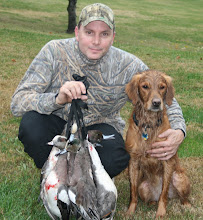 One of the most interesting sections is the state-by-state highlight of daily events. If you haven’t read it, this section has every state listed and one or two sentences regarding something of significance in a particular city in that state. Often it is related to a traumatic accident, Mother Nature, some politician in trouble (lots of those), or any other top-line story.
One of the most interesting sections is the state-by-state highlight of daily events. If you haven’t read it, this section has every state listed and one or two sentences regarding something of significance in a particular city in that state. Often it is related to a traumatic accident, Mother Nature, some politician in trouble (lots of those), or any other top-line story.So as I ordered my third glass of red wine, sprawled out in first class (no, it’s not the norm - I just burned some miles), I began making my way through the state alphabet soup.
Toward the end of the page, I came upon the state of Wisconsin and read this:
“Madison - Ducks are healthy and abundant heading into the autumn hunt, state wildlife experts said. Bird ecologist Kent Van Horn said ducks are so plentiful that hunters can enjoy the maximum 60-day season allowed by federal regulations.”
A big smile came across my face and I let out an audible chuckle. “Imagine that”, I thought. “A dispassionate, unbiased, nonsensationalized reference to the upcoming hunting season. Go figure.”
It reminded me of my youth when autumn would bring an array of community references to the hunting season. Whether it was the annual absence note to my teachers the day before we left for deer camp, or the café and bar banners that read “Welcome Hunters” in every postage stamp town across middle America. Those were the days when the importance of hunting helped define our community.
Those references bring back memories of early morning adventures as a kid, rolling down the highway in my dad’s truck with Willie on the radio and the scent of dew-laden weeds coming through the vents. The smell of country we used to call it.
Those were the days when we would hunt for a couple of hours then pick up our decoys and head into the closest town for a gut-busting breakfast. Walking into the local café was like going to a camouflage clothing convention. Everyone slouched over the counter looked exactly like you, and you were glad for it. The pretty waitresses were happy to see you and had the coffee poured before you were settled in your booth.
Even though I am only 39 (yes, the big 4-0 is later this year), I can fondly recall when hunting season was a defining event that people marked on their calendars and communities celebrated widely. Where did those days go? Dr. James Swan - the author of In Defense of Hunting - wrote a nice piece for ESPN last month that talks about the importance of a positive public image for hunting. These are the types of messages that we need to support.
In my last post I referenced several articles on hunting and the media. And, in fact, most of us have grown sensitive to the fact that the media does more headline-selling articles regarding hunting than celebrating our long held sport.
But something about that USA Today article reached out and triggered a fond memory of days gone by. I know it was a fleeting mention buried deep in a national newspaper. But I can hope. Hope that on this one day we can chalk up a win for the season to come.
Does your hometown still celebrate the hunting season? If so, how? I’d love to hear your experiences.





